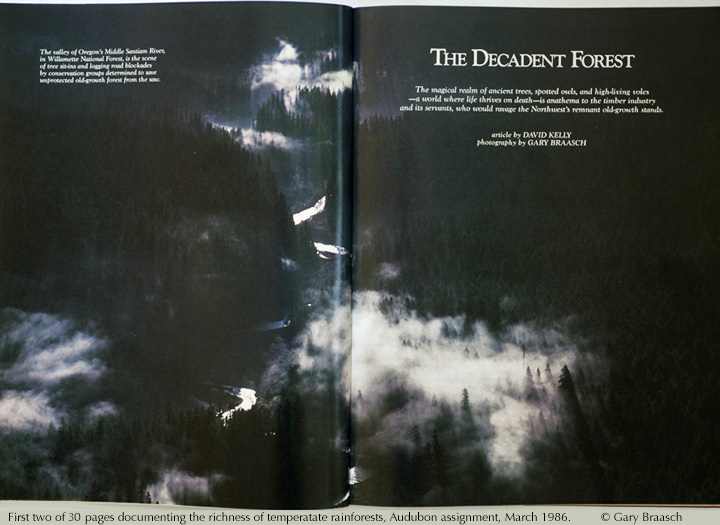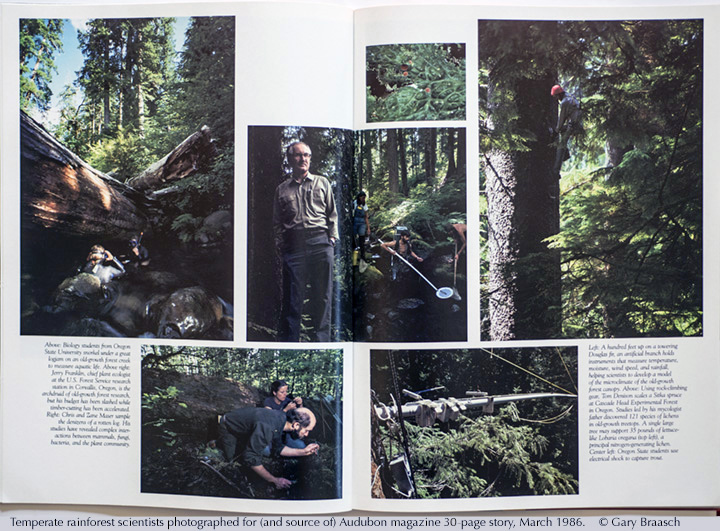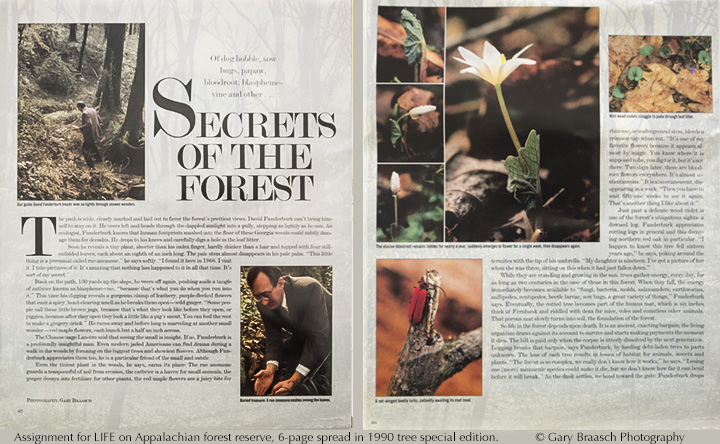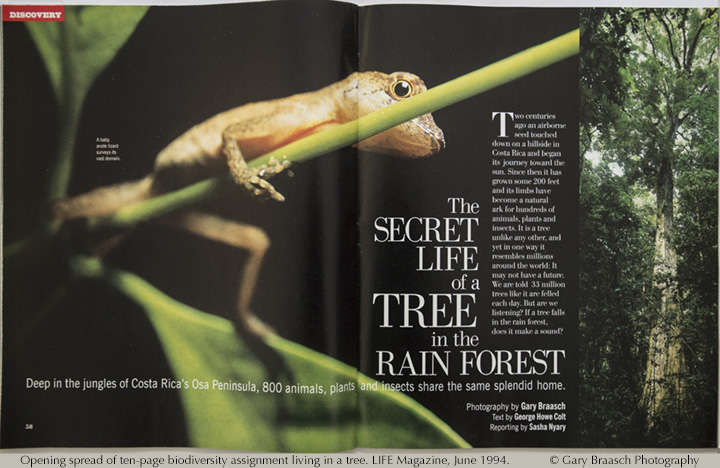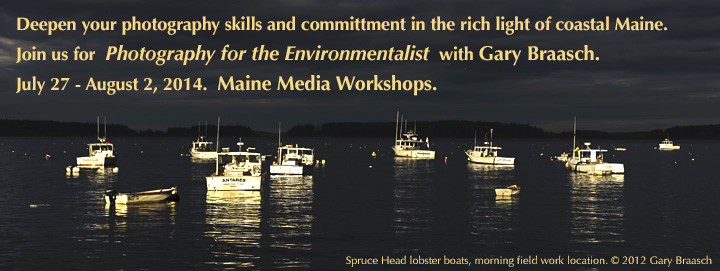Biodiversity and the Value of Ecosystems -- crucial scientific understandings about the Earth and humans.
What lives on the Earth and why it's important are the subject of two important scientific papers published in May 2014. They bring news to an inattentive public that we understand too little about the natural world and yet are damaging the very fabric of it which sustains us. Some of the co-authors are important mentors and influences on my work, who helped move my nature photography toward documenting and popularizing ecosystems in their complexity. In learning from them about the richness of and threats to biodiversity, I became an ambassador from nature, conveying its "secrets" to an international magazine and book reading audience.
The most chilling news from these recent papers is that "current rates of extinction are about 1000 times" the normal rate over prehistoric time, a new calculation which is higher and more rigorous than previous estimates. In the article, "The biodiversity of species and their rates of extinction, distribution, and protection" (Science, May 29, 2014), Stuart Pimm and co-authors including Peter Raven and Callum Roberts warn that most plant and animal species on Earth are still unknown or unstudied and their habitats are mostly small, unprotected and increasingly subject to destruction. Tallying the losses is difficult because we don't even know how many species there are: perhaps nearly half a million plant species, 5 to 11 million animals, one to two million marine animals -- and probably uncountable fungi and insects and more simple celled creatures. They all have a place in their habitat and an influence on the qualities of Earth which keep us all alive and provide all that we have.
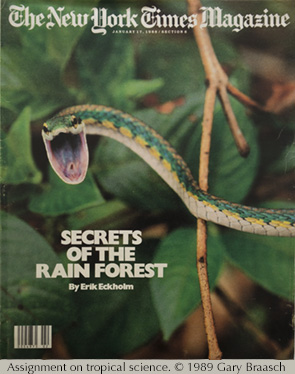
Reports of the vast variety of life and how much of it is disappearing before we even know it under the onslaught of human development are not new, but this study brings a new rigor to the calculation of rates of extinction. As I wrote in Earth Under Fire, How Global Warming is Changing the World, the great extinction that most people know of is the one that wiped out the dinosaurs 65 million years ago. Other apparent extinctions are seen in the fossil record at about 214, 250, 350–360, and 439 million years ago. The current rate, driven not by natural events but by the exploding human population and its technological ability to change landscapes, could mean that 15,000 species disappear each year, and some guesses are much higher. This carnage has been called “The Sixth Extinction” in articles by Niles Eldredge (2001), books by Richard Leakey and Roger Lewin (1996) and Elizabeth Kolbert (2013).
Extinction is forever. A wider view of the serious damage in this process is the subject of the other recent study, "Changes in the global value of ecosystem services," (Global Environmental Change, 2014) in which Robert Costanza and colleagues estimate the ongoing loss of crucial Earth systems and habitats in terms most of us understand -- money. Like the Pimm study, this research uses improved surveys of the planet and deeper knowledge of how humans use it, to calculate that "land use changes between 1997 and 2011 have resulted in a loss of ecosystem services of between $4.3 and $20.2 trillion/yr." The understanding of how ecosystems work to create new soil, clean air and water, create food and materials, and process waste into life again, was described by Gretchen Daily et al in Nature's Services: Societal Dependence on Natural Ecosystems (Island Press, 1997). Some of her co-authors describing the benefits to human societies from natural ecosystems included my mentors Jane Lubchenco, Stephen Schneider and George Woodwell. The same year Costanza published (Nature 1997) his first seminal tally of what these ecosystem services are worth. Some criticized the idea of putting a monetary value on what are clearly priceless gifts of the Earth. But it was a way to think about ecosystem services that gained a lot of attention and reframed the relationship between humans and the rest of nature.
As a nature photographer and journalist, I was aware of research into endangered species and the value of their habitats as I learned how to picture and communicate the wonders of our world. As knowledge about extinctions and ecosystem services grew, it revolutionized thinking about human life and why preserving wild habitats of all kinds is crucial -- and changed the way nature is photographed and viewed.
The photographs here are from the original published pages of some of my major shoots in forests, a subject which I started photographing in the ancient temperate forests of the Northwest. Documenting the forest taught me how to photograph an ecosystem, in, on and above the ground, in all weather, and at scales from macro to panoramic. A 1981-84 assignment for Audubon became a 30-page story in Audubon and a book, Secrets of the Old Growth Forest (Gibbs-Smith, 1988), both with writer David Kelly. This work lead to assignments in the neotropical rainforests, for the New York Times (January 17, 1989) and reached an innovative high-point in the LIFE magazine assignment "The Secret Life of a Tree in the Rainforest," which was published 20 years ago, June 1994. Please see the Assignment Portfolios from that shoot, in which I lived in a single tree on the edge of Corcovado National Park, Costa Rica, for 17 days -- including 7 overnights 150 feet in the canopy.
Published 25 years ago this summer, and still relevant in light of the continued grandeur of Yellowstone National Park and climate change's rough effect on forests: Assignment for LIFE Magazine, "Born Again: After the fire Yellowstone springs back to life."

Celebrating the art and skill of Brian Schulz, boat builder and natural designer, who among other things teaches kayak building from native woods at his Cape Falcon Kayak company.
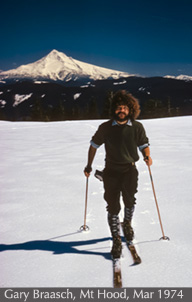
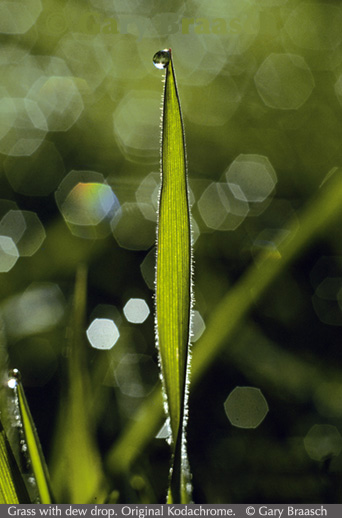 Happy spring from Braasch Environmental Photography. This is the 40th spring since I began photographing in Oregon, the beginning of my work as a nature photographer and environmental photojournalist. To mark this time, we will feature some of the images and assignments which continue to resonate as nature photography, ecological details, and reflections on current issues like climate change and the importance of preserving biodiversity. Coming up will be a portfolio from my innovative assignment for LIFE magazine, published 20 years ago this year, during which I spent three weeks high in the canopy and among the buttress roots of a huge tropical tree in Costa Rica. But we'll begin with images from some of the first nature photography journeys in the Northwest -- including a shot of some dude with big hair and bamboo ski poles spring skiing near Mount Hood in 1974.
Happy spring from Braasch Environmental Photography. This is the 40th spring since I began photographing in Oregon, the beginning of my work as a nature photographer and environmental photojournalist. To mark this time, we will feature some of the images and assignments which continue to resonate as nature photography, ecological details, and reflections on current issues like climate change and the importance of preserving biodiversity. Coming up will be a portfolio from my innovative assignment for LIFE magazine, published 20 years ago this year, during which I spent three weeks high in the canopy and among the buttress roots of a huge tropical tree in Costa Rica. But we'll begin with images from some of the first nature photography journeys in the Northwest -- including a shot of some dude with big hair and bamboo ski poles spring skiing near Mount Hood in 1974.
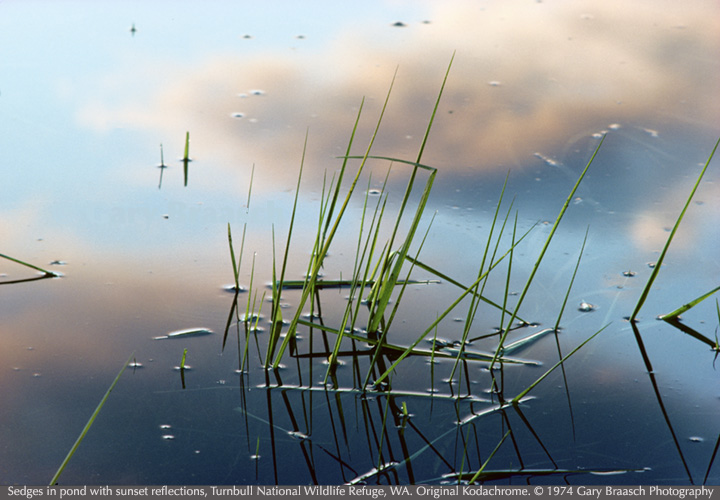
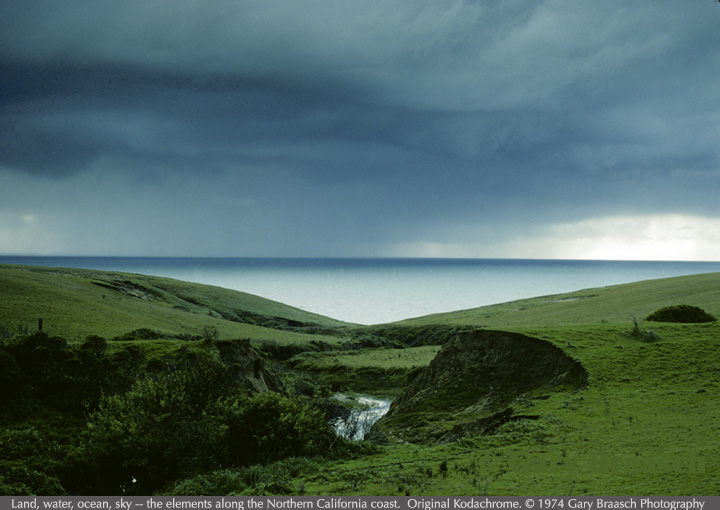

Celebrating the art and skill of Brian Schulz, boat builder and natural designer, who among other things teaches kayak building from native woods at his Cape Falcon Kayak company.
Gary Braasch is a leading environmental photojournalist who creates remarkable images and reports about nature, environment, biodiversity and global warming around the world. More...


